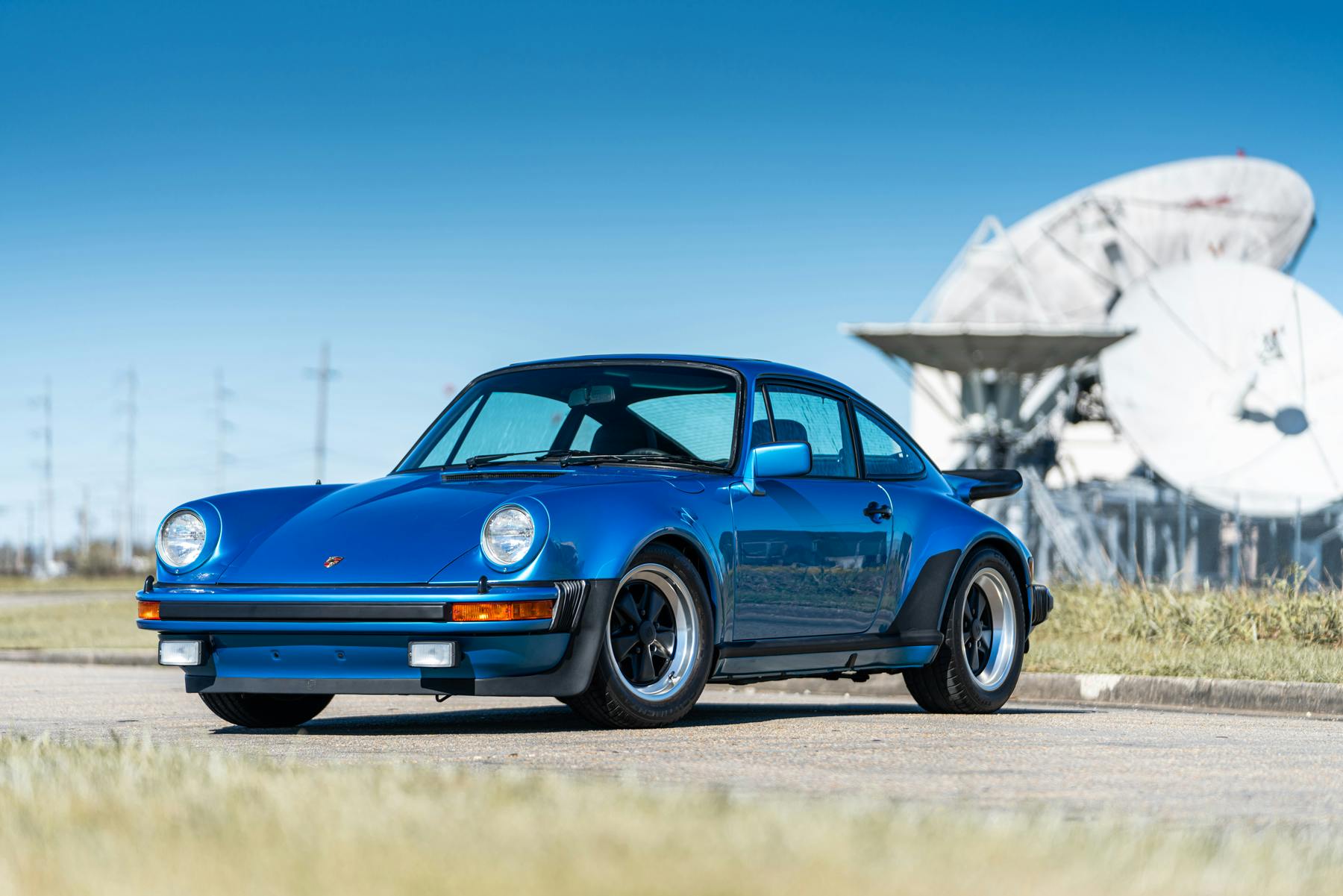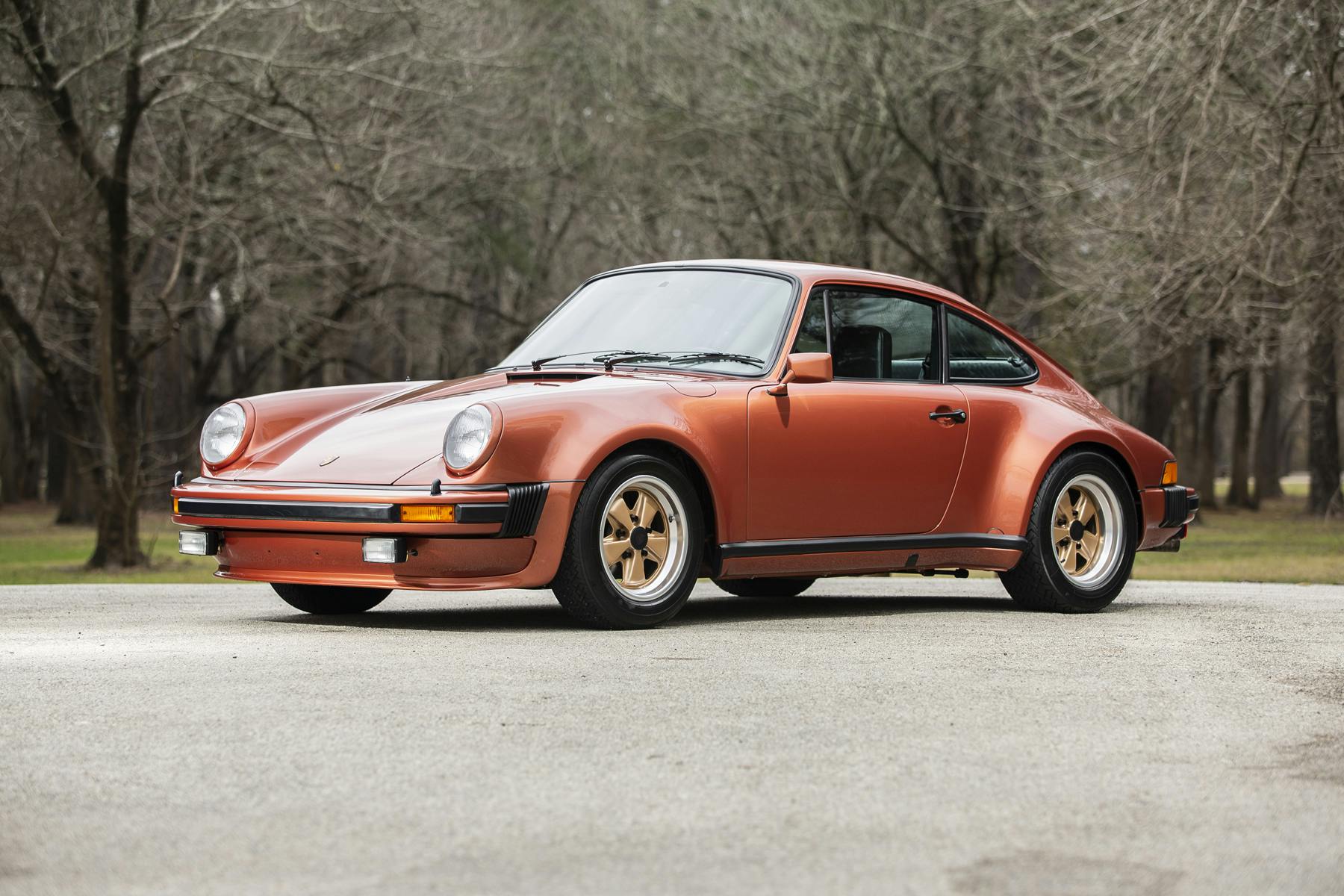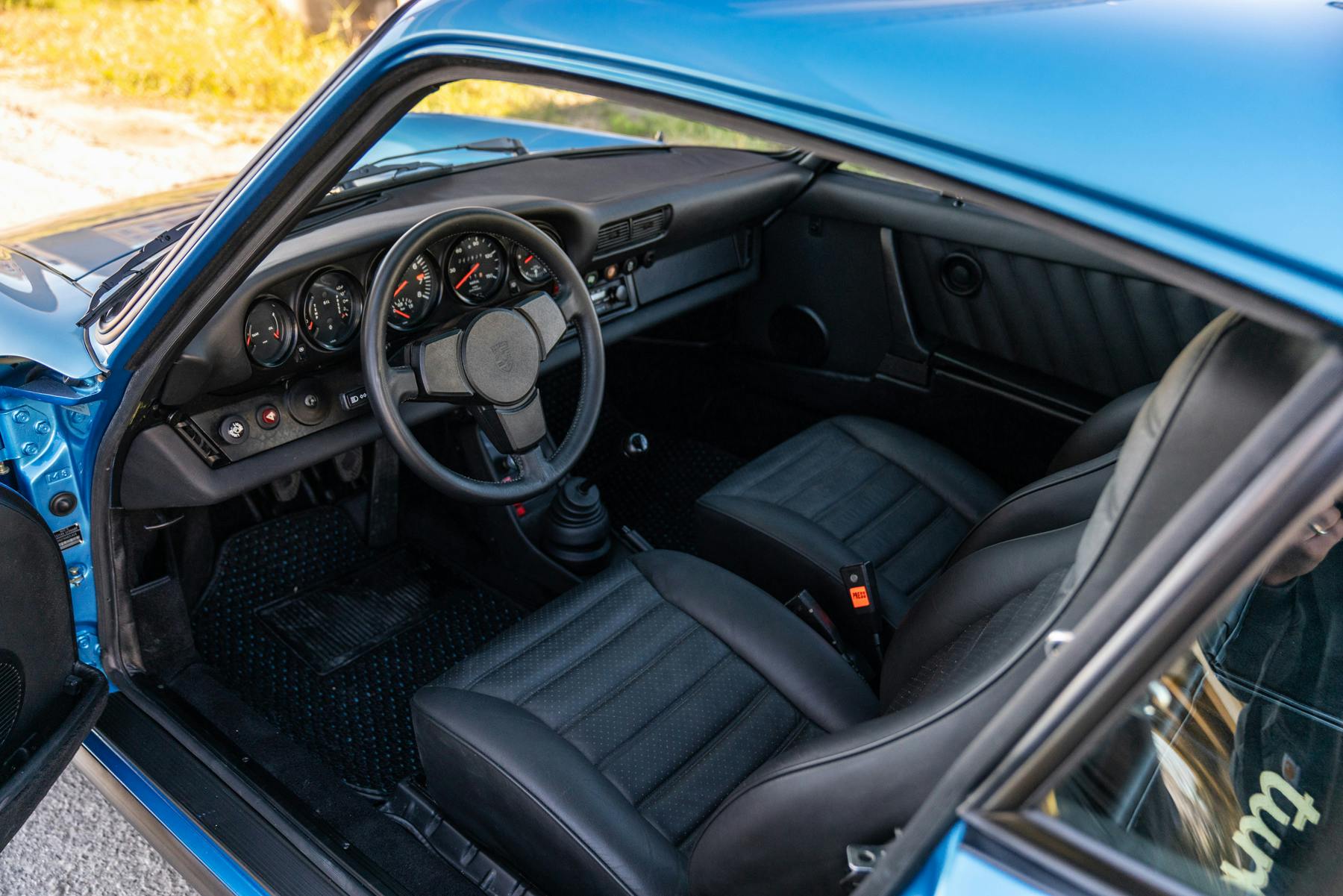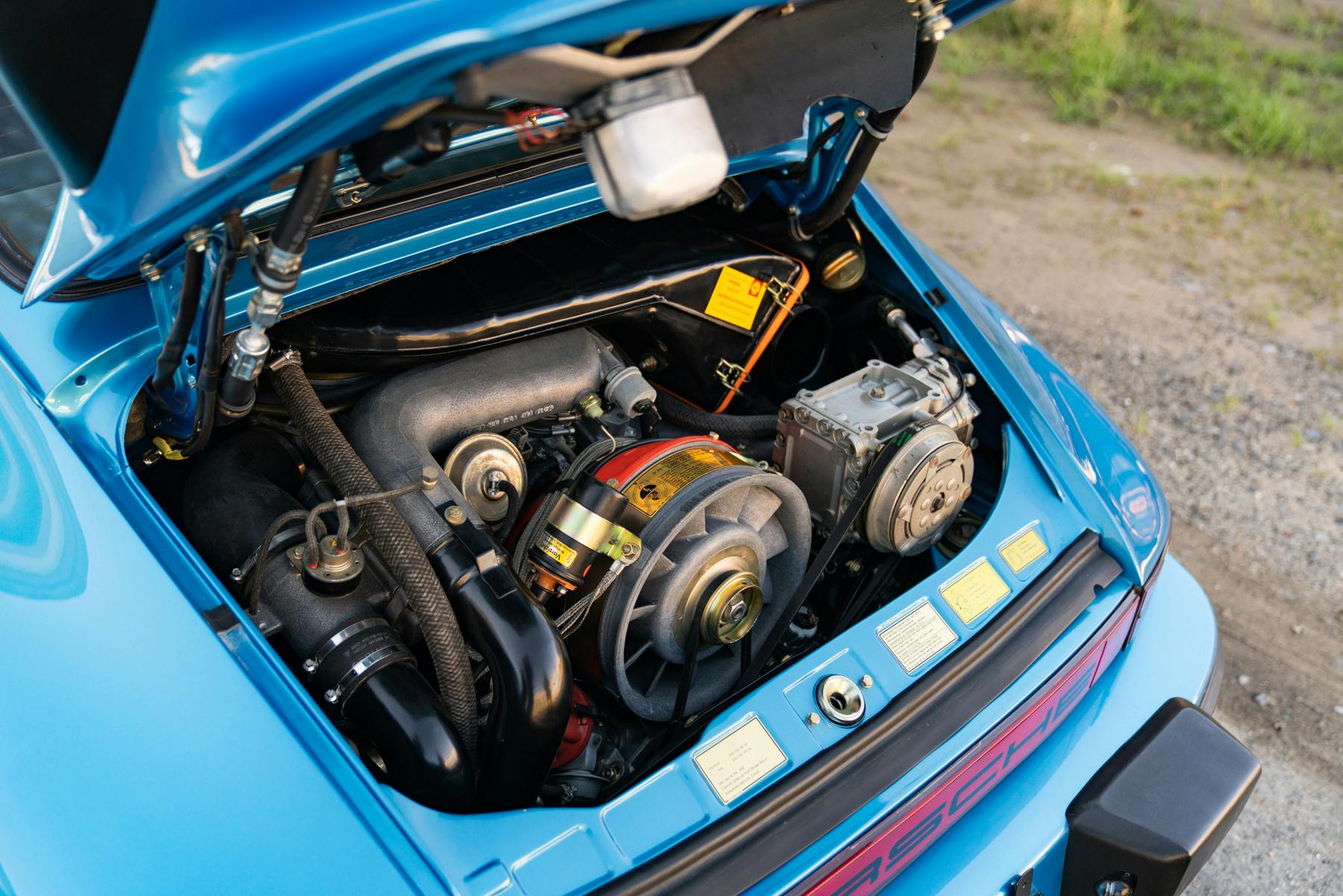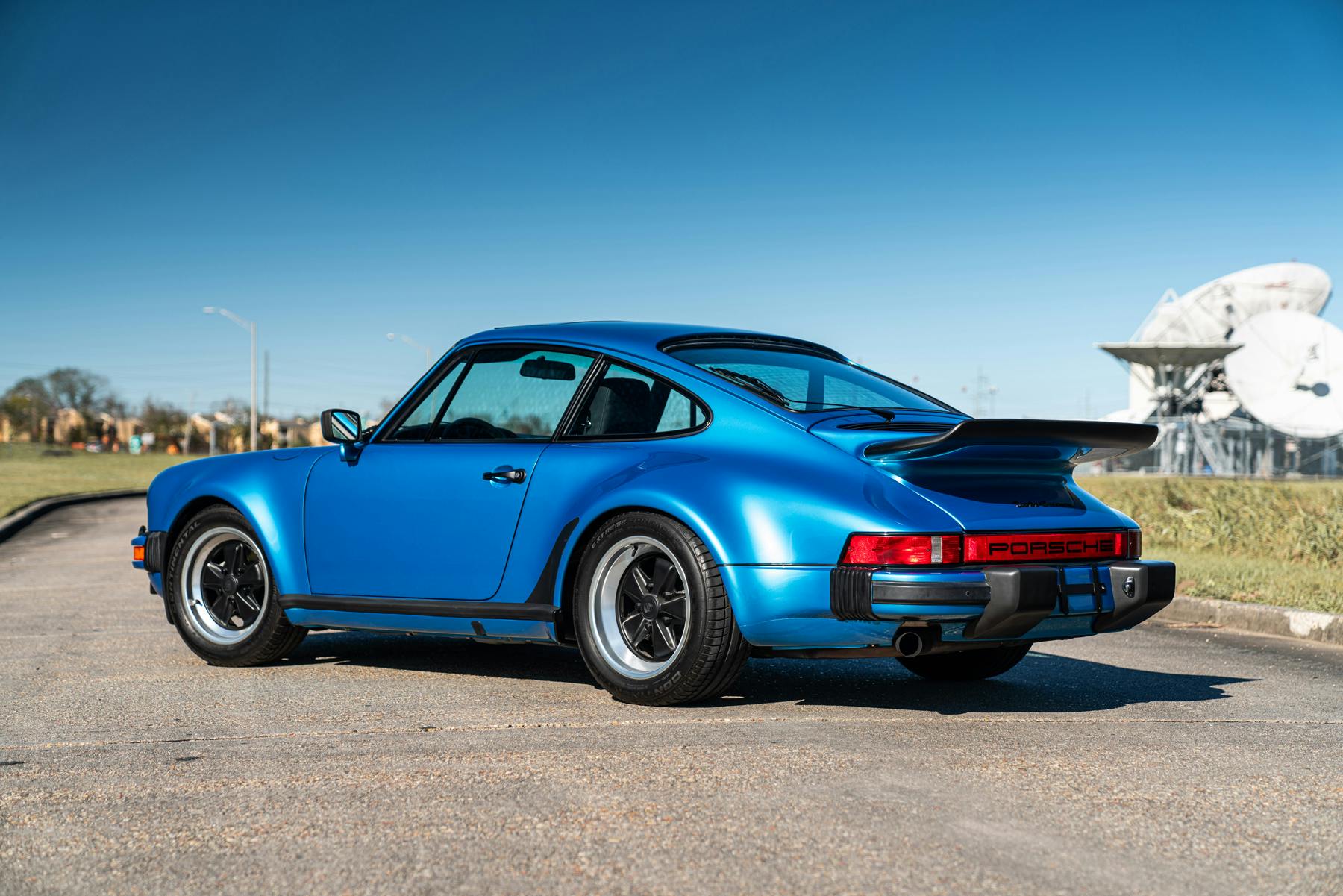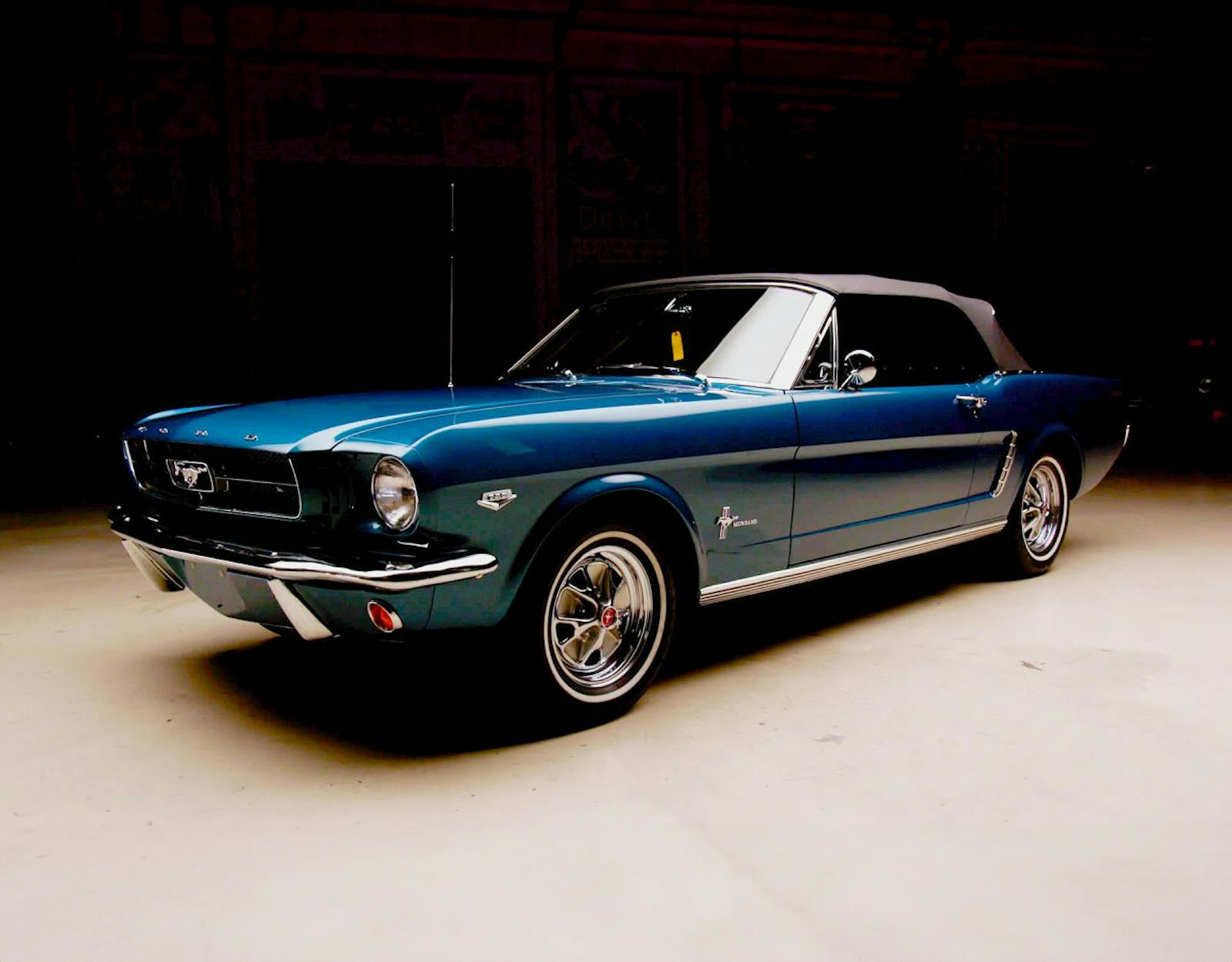A Tale of Two 911s: No wing meant more money for this 930
Porsches. They’re absolutely everywhere during Amelia Concours Week. Throw a rock in any direction and you’ll likely hit a 911 of some sort, or maybe the occasional Boxster. But since throwing rocks near the street isn’t quite acceptable social behavior, how about a slightly more scientific view?
Let’s do what we do best and zero in on the auctions. Of the 320 vehicle lots on offer among the three Amelia sales, 55 were Porsches, 10 were turbocharged, and 34 were 911s. Unbelievably rare specs and colors and interesting motorsports history were also on offer. In other words, Porschephiles with money to spend were spoiled for choice.
Two of the cars in particular caught my eye. Both interesting enough on their own, but more so when looked at together. One was a lovely early 911 Turbo (aka 930, aka Turbo Carrera in North America at the time) in an appropriately loud color. It had known ownership history, a thorough restoration, and matching numbers. It sold for $390,000.
The other was an even earlier 930, from the first year of production in 1975 (930s didn’t come to America until ’76). Finished in an equally interesting color, it boasts an even better restoration but less equipment. Without the 930’s signature whale tail rear spoiler, it almost looks like a more pedestrian Carrera 2.7 at first glance. And yet it sold for $544,000.
The natural question: Why the $154,000 difference between two great cars? In fact, the better-informed question is, why wasn’t the difference even greater?
From boom to bust and back again
Before we dig into the nitty gritty of these two sales, it’s worth remembering why 930s are such a big deal. It goes deeper than the widow-maker hyperbole and speaks to the Turbo’s significance in its era and beyond.
After Porsche proved itself as a pioneer of turbo in its Can-Am racers in the early ’70s, it was only natural that the lessons learned on track would make it into a road car at some point. A mockup boosted 911 sat on the Porsche stand at the Frankfurt Motor Show in 1973, and then in 1974 a production model bowed at the Paris Motor Show. Although loaded with luxury features and sold at a high price ($25,850 in the U.S., about $129K today), the 930 had real racing bones: Part of Porsche’s motivation in building it was to homologate the 934 race car with the FIA. Company boss Ernst Fuhrmann had hoped to sell 500 cars by mid-1976, which was a clear misjudgment—by May that year Porsche had delivered its 1000th.
Blame the 930 for being so damn good. Road & Track called it “the car every Porsche fanatic would mortgage his soul to Stuttgart to own.” Motor said it was “the finest driving machine you can buy,” and Car and Driver called it “a Panzer among Porsches, a street racer that will guarantee you a place at the top of the pecking order in a way that not even a Ferrari or a Lamborghini can.”
The Ferrari/Lamborghini comparison, cliché in our times, meant a whole lot in the ’70s. These were still the days when anything called a “supercar” was almost by necessity a temperamental, uncomfortable, hard-to-drive headache. The 930 resonated because it did all the things a supercar could do while still being roomy, comfy, and reliable. This was especially true in America, where enthusiasts were starved for high-performance in the late 1970s. Porsche sold the 930 all the way up until 1989, with more than 21,500 produced worldwide.
Fast forward to the mid-2010s, when all things Porsche were getting more expensive by the week, and the 930 was one of the models leading the charge. From January 2011 to 2016, median condition #2 (Excellent) values rocketed up 461 percent. Then they peaked and began a multi-year decline that saw #2 values dropping by 35 percent from 2016 to 2020. Only during the pandemic boom have they seen a rebound, growing 5 percent over the past year.
All about that wing (or lack thereof)
Even in the context of the latest market surge, the 930s at Gooding's Porsche-packed Amelia auction both sold way ahead of the curve.
Let's start with the $544,000 car. More than half-a-million bucks is still rare air for a road-going 930. Yet just as with the Corvettes at this same sale, the condition and provenance of the particular car go a long way toward justifying bidders' excitement.
The Salmon Metallic 1975 930 is naturally interesting as a first-year model. The 930 didn't sell in the States in 1975, and just 274 were built that year. What's even more interesting is that the 930's signature feature—the "whale tail" rear spoiler—is absent on this one. A 000 magazine article about the car claims "even the most accomplished Porsche experts were stumped by chassis number 9305700162." Since I wouldn't call myself an "accomplished Porsche expert," I was stumped, too.

According to Gooding and other articles, the car sold new to Juan Guinovart Paredes of Barcelona. Since import taxes on high-performance cars were seriously steep in Spain at the time, Paredes came up with an idea to get one over on the tax man. He ordered his Turbo to look like a cheaper, regular old Carrera and then registered it as such. His specs included no model designation on the tail, a special Blaupunkt Bamberg radio, limited-slip diff, wheel centers painted in Gazelle, copper red carpet, sport seats, air conditioning delete, the optional sticky Pirelli P7 tires, and of course the standard engine lid without the massive whale tail spoiler. Supposedly for aerodynamic reasons, the Porsche Design studio fabricated a special fiberglass front valance. According to the book Turbo 3.0: Porsche's First Turbocharged Supercar, this was the only factory 930 ever ordered without the rear wing.
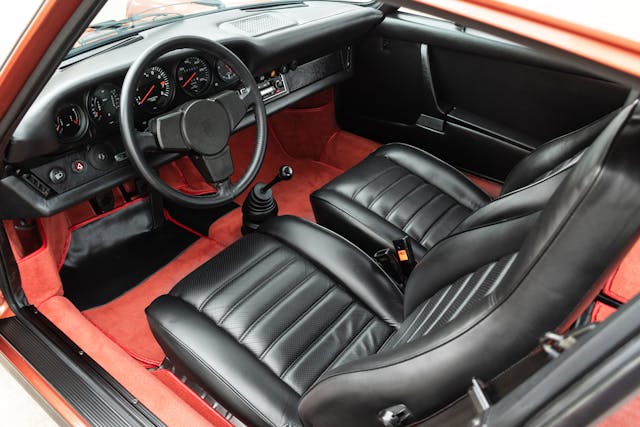
The consignor acquired the Salmon Metallic 930 in 2014, and the following year it went to the specialists at Road Scholars in North Carolina for a four-year concours-quality restoration. And what a restoration it was. Road Scholars reportedly studied other 1975 930s and their subtle differences from later cars to ensure total authenticity. The shop even went through four different companies to get the correct hue for the black anodized window frames. That's how obsessed with the details they were. We rated the car in #1- condition. This was the first time it had been offered for public sale.
In Porsche-land, little details can make a massive difference in price, and anyone who has shopped for a new 911 in recent years can tell you that fewer features (aka less weight) mean more money. The wingless 930's unique and cool combination of features, the cool story behind them, its unbelievably good restoration, and the fact that it had never gone to auction before all make it an exceptional car. All of it adds up to an exceptional price.
The Minerva Blue '77 car, which sold later in the day, is a somewhat different story. A two-owner car showing about 20,000 reportedly original miles and boasting matching numbers as well as a photo-documented restoration, it was certainly no slouch. It also got some mild engine upgrades to the tune of a claimed 300 hp (up from the factory rated 234). We rated it in #2+ condition, and its estimate was in our #1 range at $200,000-$250,000.
As noted, it did quite a bit better, selling for $390,000 and evoking yet another "Wow, wild" from our team as well as other onlookers at the sale. The color and quality of the restoration only go so far in explaining this one, leaving us to wonder if the buzz generated by the earlier sale left someone in the room itching to bring home a 930. Of course, the overall heat in the market doesn't hurt, either.
And in case you were wondering, even though both of these 930s brought eye-popping prices, they fall well short of a record. Back in 2015, Steve McQueen's 930 sold for $1.95M in Monterey—apparently the McQueen premium trumps everything. Putting a price on fame, however, is another conversation.

